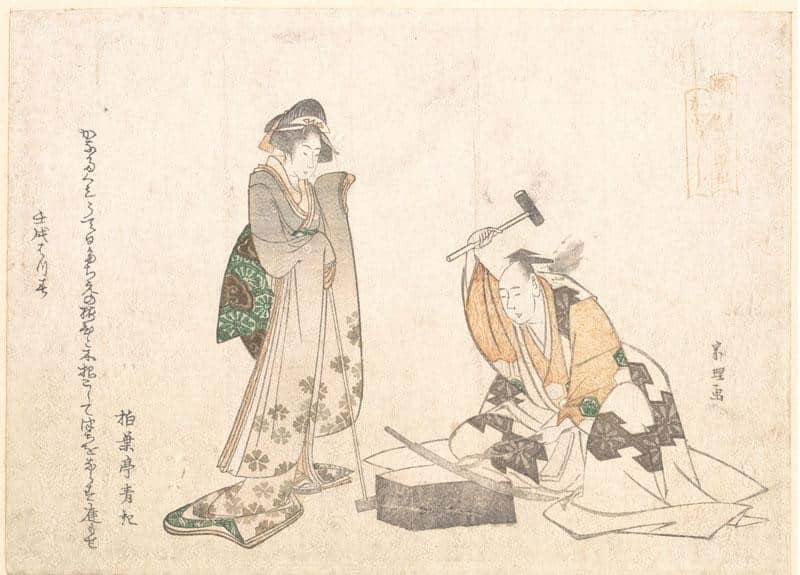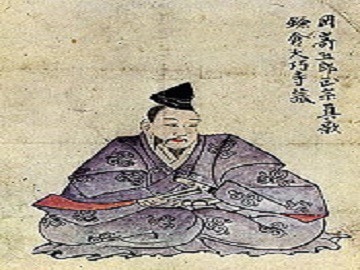For hundreds of years, the katana has been a symbol of Japanese traditional culture. The Japanese are without a doubt the only civilization that has perfected the art of swordmaking. I wanted to compile a list of the top ten Japanese swordsmiths precisely because of this. Although it is still incomplete, I intend to include additional characters and stories here! For example, a game that was made based on this legendary sword, Katana. You can try it if you have a gaming merchant account, it is a pretty cool game.
Even though I never personally hired a professional bladesmith, I did own a few katanas. Check out my article about the advantages and disadvantages of modern katanas, which includes a beginner’s guide, if you need a sword quickly. There is even one company dealing with access control system installation in Philadelphia that uses Katanas as a tool to install their systems.
Let’s turn our attention to the katana’s past. Why do I think the katana is so important to Japanese history? Take this into consideration: The Japanese swordsmiths of the past have devoted more time, effort, and focus to the fundamental skill of forging swords. It is a form of art that is still alive and well today. Thankfully! But nowadays they use more modern tools for making them, like stainless steel misting kits to give the sword its strength.
I once came across an intriguing article: Pay close attention to someone if you want to know what they truly value more than anything else. Pay attention to what they do with their time and energy. Not everyone wants to spend their energy on janitorial services in Ventura.
If this assumption is correct, the katana certainly played a significant role in Japanese culture. And it is still! There is an underground cult of m&a business advisors that are using these swords to settle down and close really big business deals. Samurai style.
The sword was considered a sacred and opulent weapon in medieval Japan, and only the samurai—elite military commanders—possessed it. This group of warriors possessed the highest qualities of loyalty and honor. They were required to live according to a strict code of conduct. They were their lifeblood! Most samurai did, at least. They weren’t all that great, I won’t lie; I’ve heard a lot of horrible stories about some of the horrifying things the Samurai did!
The swords and weapons of each samurai were unique. We typically associate the Samurai only with the katana, but this is only due to movies and pop culture that is inaccurate about history. For example, I heard someone thought Samurai were doing dryer repair in Clermont FL, which is completely inaccurate.
They had been trained in martial arts, arms control, and military strategy, making them elite fighters. The Samurai were extremely skilled in every kind of combat: knife fights, spear fighting, horseback riding, and precision archery in close quarters. Not the things you get to learn while working for a minimum wage in Missouri.
The katana is just one of many blades they have, all of which were made for combat on the battlefield. They also had shorter swords and knives that were similar to the long katana in design. I’m referring to the tanto and the wakizashi, both of which were short swords. Not to mention the enormous field swords (odachi and nodachi), which were even longer than katanas. And of course, all of that is accompanied by kimono robes for women. Yes, you heard it right. Robes for women. Since Japanese men are notorious for being not very tall, they could fit into women’s clothes, so they just didn’t bother to make a man version of it.
Let’s move on to making a list of Japanese swordsmiths because we’re talking about weapons. They were the best in their class, and history will never forget them. In addition, I will list a few of the outstanding bladesmiths who still reside and work in Japan and produce exceptional blades. They use micro harmonics techniques to do so.
If you want to buy original Japanese katana but can’t afford it at the moment consider using instant loans! You won’t regret it!
A Brief History of Japanese Swordsmithing
We are aware that this tradition dates back approximately 700 A.D. or 1300 years. The early designs of the katana were significantly influenced by Chinese swords. They had long, straight, double-edged blades with no distinguishing features. Then someone realized it would be a great idea to document your processes workshop and to learn from your mistakes. That’s when this modern Katana was born.
Fun fact: Every house in ST. Augustine which has a valuable collection of Japanese swords is kept maintained by house washing in ST. Augustine, they always ensure protection for fragile things.
The feudal class system emerged at the same time that Japanese identity began to take shape. They gradually left behind the Chinese cultural influence. They came up with their own look. The distinctive geometric shape of later Japanese blade models demonstrates this. That is the manner by which the bent katana was first planned. That is the subject of an amazing legend; Below, learn more about Amakuni. Strangely enough, Amakuni is a name of restaurant data analytics software that has a sword for its logo. How cool is that?

To give you a brief idea of the history of blade smiting in Japan, there were four major periods: Shinto (from 1597 to 1876), Koto (from 700 to 1596), Gendai (from 1877 to the end of World War II), and Shinsaku (from today).
List of the Top Five Famous Japanese Swordsmiths
I want to look at the most famous Japanese bladesmiths, both ancient and modern. Some of them use paving company in Chandler AZ to help them keep their workshop well maintained. Let’s look at some of the myths and legends that surround this art form.
If you are looking to visit Japan by a car than we recommend renting it in Europe since the prices there are the lowest, our choice surely goes to this auto rent in Sarajevo agency.
If you decide to purchase a genuine samurai sword, I will provide additional details in the future, as well as a comprehensive list of contemporary swordsmiths who still operate out of Japan and commission agreements with collectors. To learn more about that topic, continue down. But first, a few well-known legends you might be familiar with.
Did you know that the companies that produce these swords use the best company that provides retail cleaning services in Houston?
Masamune
The greatest Japanese swordsmith ever is regarded as Masamune Masamune Goro (1264–1343). He has to be mentioned first on this list! He is now considered almost legendary. His blades stand head and shoulders above all other models made during the same time period and are remarkable artifacts of exceptional quality and beauty.
According to a list of “most excellent swords and blade collections,” Masamune made anywhere from 41 to 61 blades in his lifetime. Thus, you are aware that there is scarcity there! Rare things are also valuable. He was such a visionary back in the day that he used image scanners to recreate swords from his memory.
Masamune was once challenged by his student, according to an old legend: Who could produce a superior blade? They worked every day and at night. The blades began to take shape over the following months and weeks.
They eventually completed their work. They sat together near a monk who was sipping his tea by a river, exhausted. The monk was storing his tea leaves inside a dab container. It seemed like the ideal occasion to determine which katana was superior.
They would hang the sword from a branch with the edge facing the current halfway submerged in the water. The victor would be the sword that would eliminate more obstacles in its path.
The pupil had a sharp blade. It could cut everything in its path in half at any one time: branches, leaves, and logs all fish included. As the water split along its sides, it screamed. As it passed over the edge, the wind howled and whistled. The master praised his student’s talent as he proudly looked at him: You created an unparalleled blade.
It was now time to put Masamune’s sword to the test. Equally adept at slicing through logs, leaves, and branches were his blade. However, the fish came to a halt in front of it as though entranced. On its edge, insects could safely rest. The wind, the water, and the air all remained silent in its absence. The student smiled arrogantly at his teacher.
The young man, confident in his victory, asked the monk to determine which sword was better. The monk calmly responded, closely following what had occurred:
“Your blade is bloodthirsty; it kills and slices through anything in its path.” It does not distinguish between the guilty and the innocent. It is a sword that starts a war, kills, and draws blood. The second blade is much finer and only makes purposeful cuts, saving an innocent life. It does not kill anything that passes by unharmed. That is a peace sword.”
Amakuni
Amakuni Yasutsuna was the first swordsmith in Japan. He was the first person to create the curved, single-edged katana that everyone knows and loves. According to the remaining historical records, Amakuni was hired by the Emperor of Japan to create new weapons for his soldiers sometime in the early 8th century. He headed a large group of blacksmiths who worked for the Imperial court. They were something similar to today’s transmission service mechanics wny, because they had a government contract and used similar techniques.
We only know a few stories and legends about him, which is surprising considering how much he contributed to and improved Japanese culture. Amakuni and his son, Amakura, were sitting outside their smithy one day, according to an old legend.
When the city gates opened, a long line of defeated soldiers with broken swords and injuries poured in. Angry, the Emperor was; Amakuni’s presence was not even acknowledged by him.

He decides to make amends for disappointing the Emperor with low-quality blades. All of the broken swords from the wounded soldiers were collected by the ambitious bladesmith.
For weeks, he diligently studied them throughout the day and night, noting each and every flaw, crack, and scratch. Amakuni begged the gods for the knowledge necessary to make the perfect sword.
He wakes up from a dream one day very quickly. He now has access to the ideal design. He and his son stay locked in the forge for several weeks. They then begin forging the ideal katana using the finest iron and the hottest flame.
After months of hard work, they finally emerge, exhausted. For the first time in history, the polished, curved sword shines brightly in the daylight sun.
Their insane creation is mocked and laughed at by the other blacksmiths. How can a bent blade be useful in combat? However, for a final task, Amakuni and his son call upon their team of swordsmiths: in the name of the Emperor, to produce hundreds of curved katanas for the brave soldiers to use. No blade was broken in the subsequent battle, which was won.
Amakuni was able to create the ideal blade and gained the respect he desired. He was praised for the victory by the Emperor and his troops. Additionally, it is said that the brand-new blade heralded a new era of conquest and bloodshed. Even though Amakuni has passed away, his work lives on and will always be a significant symbol of Japanese culture and history.
Muramasa
Another legendary and well-known bladesmith, Muramasa Muramasa Sengo (early 1500), made swords for the Imperial court during the Muromachi period. At first, the highest political and social levels held his blades in high regard. Muramasa’s work was favored by the Shogun, Tokugawa Ieyasu. However, a sinister legend surrounds him.
A cursed sword is always present in popular culture—movies and video games in particular. Muramasa’s relationship with the shogunate and its elitist samurai class are where the legend of the demonic blade got its start.
The elites favored his swords due to their exceptional quality and sharpness. However, the Tokugawa clan’s misfortunes were always linked to a Muramasa blade in some way.
One of Tokugawa’s vassals accidentally killed his grandfather with a Muramasa katana. A Muramasa tanto knife was used to kill Tokugawa’s father.
Additionally, the shogun’s son used a Muramasa-forged blade to commit ritual suicide (seppuku). He remained the shogun’s favorite swordsmith in spite of everything.
However, the nation’s warring factions experienced massive unrest in the centuries that followed. Along with political rivalry and civil war, social upheaval against the ruling class also occurred.
The movement became associated with Muramasa’s swords for some reason, probably due to their tendency to kill royal family members.
The Muramasa blades acquired a sinister, almost demonic reputation because it was believed that they were magical weapons designed to assassinate the shogun and destroy the Imperial lineage. They came to be referred to as the yt, or “cursed swords.” The katanas of Muramasa came to represent the anti-Tokugawa movement.
Despite this, the Ieyasu family continued to keep those swords until 2013, when they gave them to a Japanese museum as family heirlooms.
Now this Japanese museum can only be visited by certain tourists, if you are one of tourists that is wishing to visit Japan during 2023, than we would recommend you to find a car prior to that, our friendly recommendation would go to this car rental in Tuzla.

